This recipe provides a more detailed, beginner-friendly guide to making delicious, versatile flatbread at home without needing an oven. This is a game-changer for homemade bread enthusiasts, especially beginners.
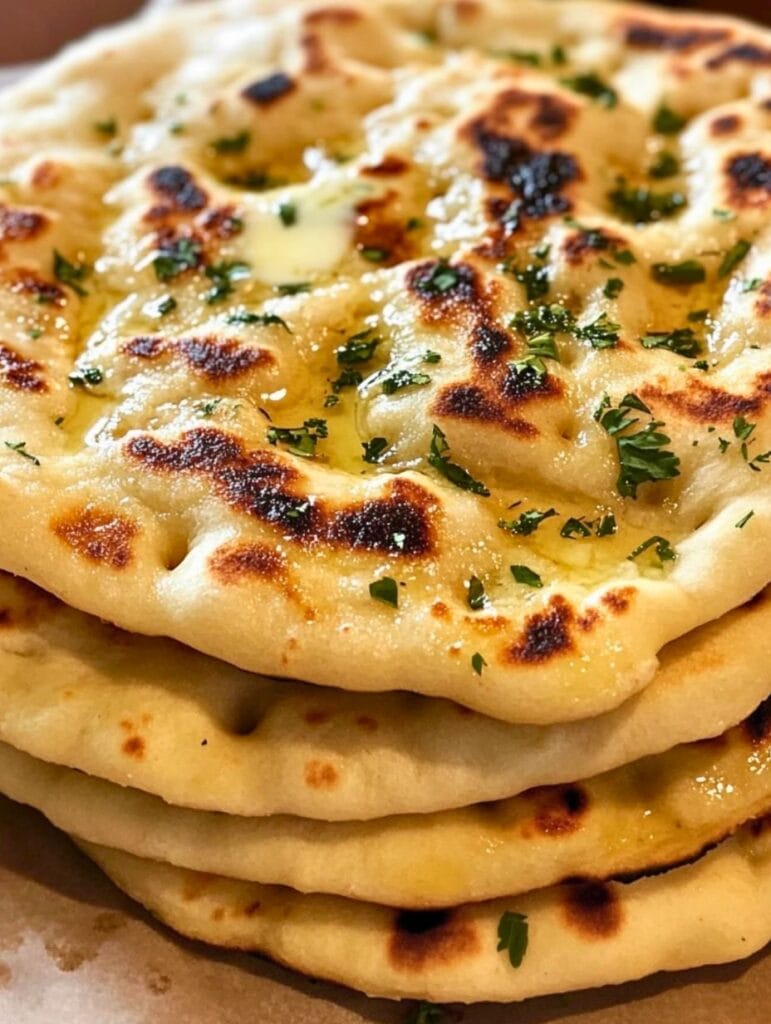
Save This Recipe! 💌
We'll email this post to you so you can cook it later!
Cuisine: Mediterranean
Prep Time: 30 minutes
Cooking Time: 20 minutes
Total Time: 1 hour
Servings: 10 flatbreads
Here’s a great video that shows the process of making simple flatbread.
Why You’ll Love Making It
- Incredibly Soft & Fluffy Texture: The combination of yeast for lift and yogurt for moisture results in a wonderfully tender and light flatbread, perfect for tearing, dipping, and wrapping.
- No Oven Required: All the cooking is done on the stovetop in a simple pan or skillet, making this recipe accessible to everyone, regardless of their kitchen setup.
- Amazingly Versatile: Use it as a side for curries and soups, as a base for mini pizzas, or as a wrap for gyros and sandwiches. The possibilities are endless.
- Beginner-Friendly: The steps are straightforward and broken down to ensure success. With detailed tips, you’ll feel confident from the first mix to the final flip.
- Customizable Flavors: While delicious as is with herbs and garlic, you can easily personalize the dough by adding your favorite spices, seeds, or even finely grated cheese.
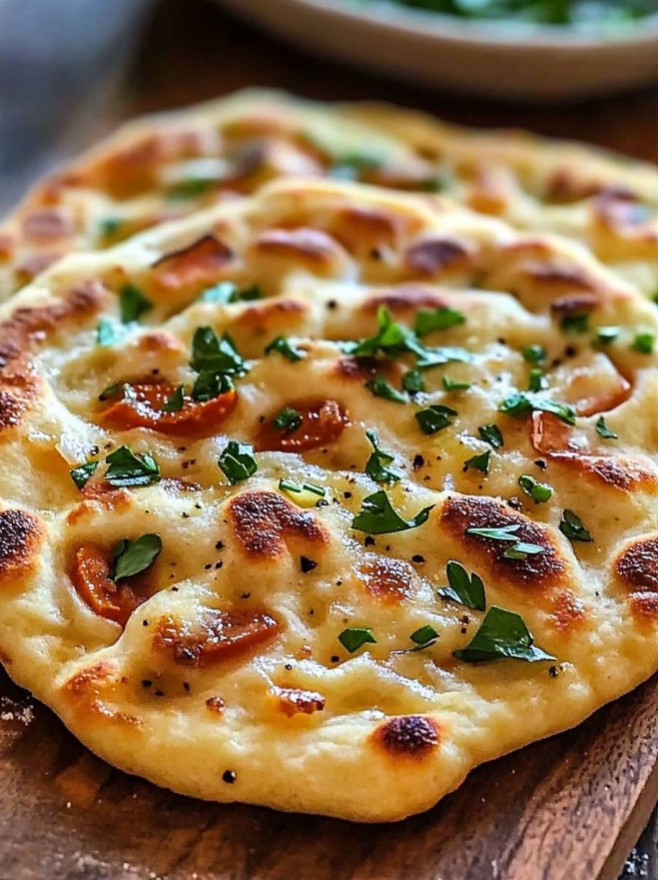
Ingredients
- 1¼ cups lukewarm water (around 105°F/40°C)
- 2½ teaspoons active dry yeast (1 standard packet)
- 1 tablespoon granulated sugar
- ¾ cup plain yogurt (full-fat preferred for richness)
- 2 tablespoons olive oil, plus more for brushing
- 1 tablespoon salt
- ½ tablespoon dried basil
- ½ tablespoon dried oregano
- 1 teaspoon garlic powder
- 3¾ cups all-purpose flour, plus more for dusting
- ¼ cup chopped fresh parsley (optional)
Instructions
Step 1: Activate the Yeast
In a large mixing bowl, combine the lukewarm water, yeast, and sugar. Gently whisk them together. Let the mixture stand for 8-10 minutes. You’ll know the yeast is active when the surface becomes foamy and bubbly. This crucial step ensures your flatbread will be light and airy.
Step 2: Combine Wet Ingredients and Spices
Once the yeast is activated, whisk in the plain yogurt, 2 tablespoons of olive oil, salt, dried basil, dried oregano, and garlic powder until the mixture is smooth and well-combined.
Step 3: Form the Dough
Gradually add 3½ cups of the flour and the optional fresh parsley to the wet ingredients. Use a wooden spoon or spatula to mix until a shaggy, rough dough begins to form.
Step 4: Knead to Perfection
Lightly flour a clean work surface and turn the dough out. Knead for 4-5 minutes. The goal is a smooth, elastic dough that is soft and slightly tacky to the touch. If it feels very sticky, add a little more flour, one tablespoon at a time. Be careful not to add too much, as this can make the flatbread tough.
Step 5: Divide and Rest the Dough
Divide the dough into 10 equal portions. For uniformity, using a kitchen scale is helpful. Roll each portion into a small, smooth ball. Lightly dust the balls with flour, place them on a tray or cutting board, and cover them with a clean kitchen towel. Let them rest for 15 minutes. This rest allows the gluten to relax, making the dough much easier to roll out.
Step 6: Roll Out the Flatbreads
While the dough rests, preheat a dry cast-iron skillet or non-stick frying pan over medium-low heat. Working with one ball at a time, use a rolling pin to roll it into a circle about 7 inches in diameter. Lightly brush the top surface of the rolled-out dough with olive oil.
Step 7: Cook the Flatbread
Carefully place the dough, oil-side down, into the hot pan. Cook for about 1 to 1½ minutes, or until large bubbles start to form on the surface. While it’s cooking, brush the top (exposed) side with a little more olive oil.
Step 8: Flip and Finish
Flip the flatbread and cook for another minute on the second side until it’s golden brown with some darker spots. It should be slightly puffed.
Step 9: Keep Warm and Serve
As each flatbread finishes cooking, stack them on a plate and keep them covered with a kitchen towel. The trapped steam will keep them soft and pliable. Repeat the rolling and cooking process with the remaining dough balls. Serve warm.
Tips for Success
- Don’t Rush the Rest: The 15-minute rest after shaping the dough balls is essential. It makes the dough less resistant to rolling and results in a more tender flatbread.
- Get the Pan Temperature Right: The pan should be hot enough to cook the flatbread quickly, but not so hot that it burns before cooking through. Medium-low heat is usually perfect. If they take too long to cook, they can dry out.
- Roll Thinly: For a soft, foldable flatbread, roll the dough quite thin, about ⅛-inch thick. They will puff up as they cook.
- Cover After Cooking: Stacking and covering the cooked flatbreads is key to keeping them soft. The residual heat creates steam, which ensures they stay pliable.
FAQs
Can I make this flatbread without yeast?
Yes, for a quicker version, you can substitute the yeast with 1 teaspoon of baking powder and ½ teaspoon of baking soda mixed in with the flour. The texture will be slightly denser, but still delicious and soft.
Why didn’t my flatbread puff up?
There are a few common reasons: the yeast wasn’t properly activated, the dough was too dry from too much flour, or the pan wasn’t hot enough. A hot surface is crucial for creating the steam that makes the flatbread puff.
How do I store and reheat flatbread?
Store cooled flatbreads in an airtight container or a zip-top bag at room temperature for up to 2 days, or in the refrigerator for up to 5 days. To reheat, warm them in a dry skillet over medium heat for about 15-30 seconds per side. You can also wrap them in a damp paper towel and microwave for 15-20 seconds.
Can I freeze flatbread?
Yes, this recipe freezes beautifully. Once cooked and completely cooled, stack the flatbreads with a piece of parchment paper between each one. Place the stack in a freezer-safe bag and freeze for up to 3 months. Reheat directly from frozen in a skillet or oven.
What can I serve with this flatbread?
This flatbread is incredibly versatile. Serve it with dips like hummus or tzatziki, alongside hearty stews and curries like Butter Chicken, or use it as a wrap for gyros or chicken shawarma. It also makes a fantastic base for quick, personal-sized pizzas.
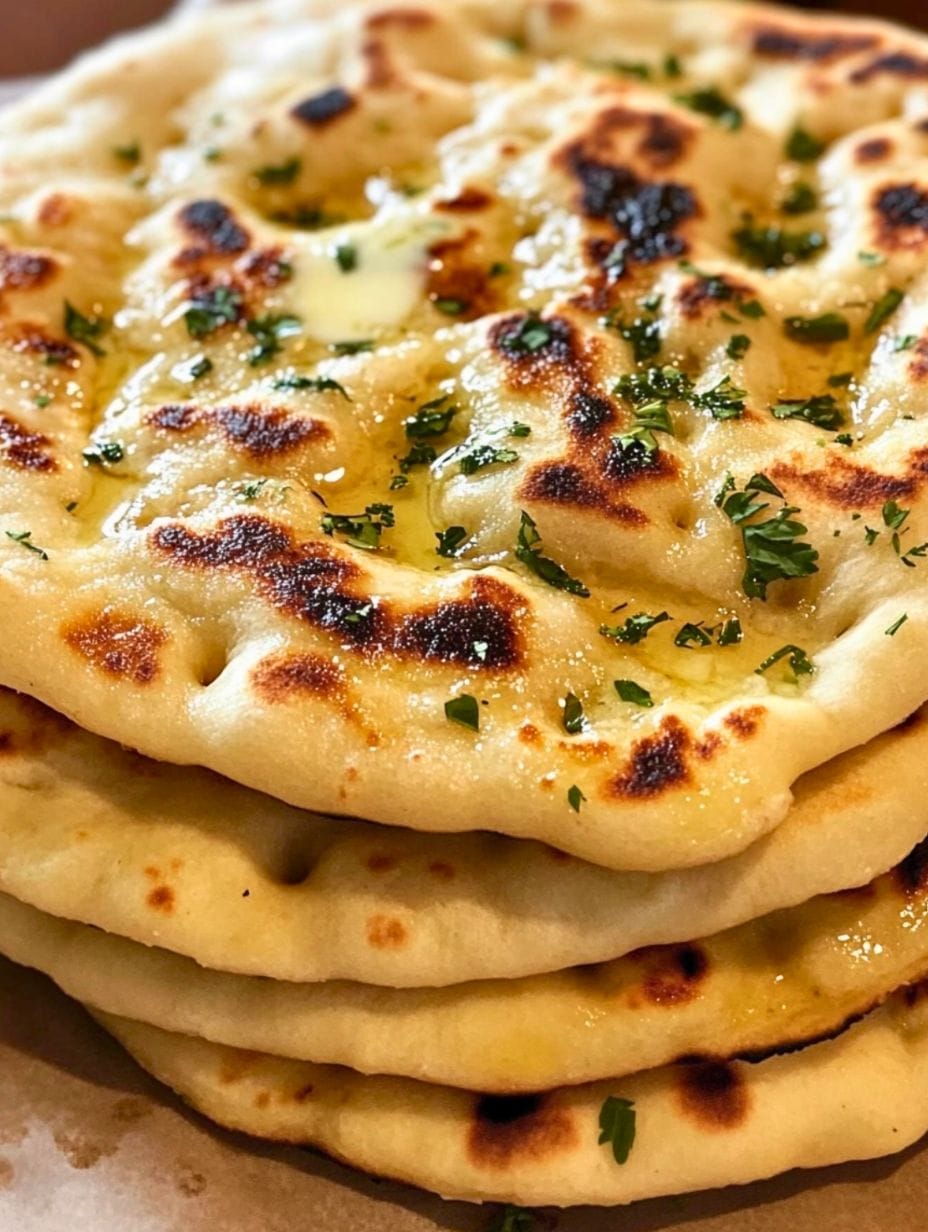
Simple Flatbread
Ingredients
- 1¼ cup Lukewarm Water Around 105°F/40°C
- 2½ tsp Active Dry Yeast
- 1 tbsp Granulated Sugar
- ¾ cup Plain Yogurt
- 2 tbsp Olive Oil
- 1 tbsp Salt
- ½ tbsp Dried Basil
- ½ tbsp Dried Oregano
- 1 tsp Garlic Powder
- 3¾ cup All-purpose Flour
- ¼ cup Chopped Fresh Parsley Optional.
Instructions
- In a large mixing bowl, combine the lukewarm water, yeast, and sugar. Gently whisk them together. Let the mixture stand for 8-10 minutes. You'll know the yeast is active when the surface becomes foamy and bubbly. This crucial step ensures your flatbread will be light and airy.
- Once the yeast is activated, whisk in the plain yogurt, 2 tablespoons of olive oil, salt, dried basil, dried oregano, and garlic powder until the mixture is smooth and well-combined.
- Gradually add 3½ cups of the flour and the optional fresh parsley to the wet ingredients. Use a wooden spoon or spatula to mix until a shaggy, rough dough begins to form.
- Lightly flour a clean work surface and turn the dough out. Knead for 4-5 minutes. The goal is a smooth, elastic dough that is soft and slightly tacky to the touch. If it feels very sticky, add a little more flour, one tablespoon at a time. Be careful not to add too much, as this can make the flatbread tough.
- Divide the dough into 10 equal portions. For uniformity, using a kitchen scale is helpful. Roll each portion into a small, smooth ball. Lightly dust the balls with flour, place them on a tray or cutting board, and cover them with a clean kitchen towel. Let them rest for 15 minutes. This rest allows the gluten to relax, making the dough much easier to roll out.
- While the dough rests, preheat a dry cast-iron skillet or non-stick frying pan over medium-low heat. Working with one ball at a time, use a rolling pin to roll it into a circle about 7 inches in diameter. Lightly brush the top surface of the rolled-out dough with olive oil.
- Carefully place the dough, oil-side down, into the hot pan. Cook for about 1 to 1½ minutes, or until large bubbles start to form on the surface. While it's cooking, brush the top (exposed) side with a little more olive oil.
- Flip the flatbread and cook for another minute on the second side until it's golden brown with some darker spots. It should be slightly puffed.
- As each flatbread finishes cooking, stack them on a plate and keep them covered with a kitchen towel. The trapped steam will keep them soft and pliable. Repeat the rolling and cooking process with the remaining dough balls. Serve warm.
Notes
- Don’t Rush the Rest: The 15-minute rest after shaping the dough balls is essential. It makes the dough less resistant to rolling and results in a more tender flatbread.
- Get the Pan Temperature Right: The pan should be hot enough to cook the flatbread quickly, but not so hot that it burns before cooking through. Medium-low heat is usually perfect. If they take too long to cook, they can dry out.
- Roll Thinly: For a soft, foldable flatbread, roll the dough quite thin, about ⅛-inch thick. They will puff up as they cook.
- Cover After Cooking: Stacking and covering the cooked flatbreads is key to keeping them soft. The residual heat creates steam, which ensures they stay pliable.
Save This Recipe! 💌
We'll email this post to you so you can cook it later!



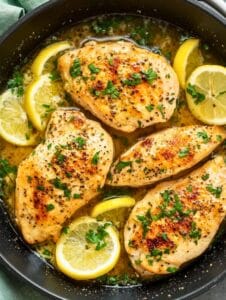
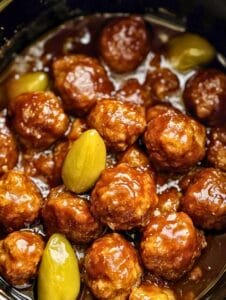
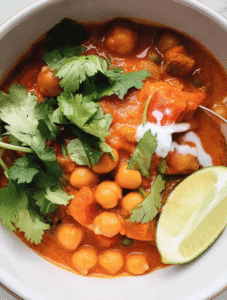
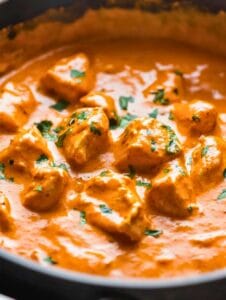
hey Sandra Clare can i use whole wheat flour instead of the white stuff for this flatbread recipe?
Just made these flatbreads and omg, they’re sooo good. Didn’t knew making bread could be this easy, hats off to the recipe!
Mediterranean flatbreads in 50 minutes? That’s a joke. Real flatbread takes time and patience, something this recipe lacks.
can i skip the yeast? dont have it and too lazy to buy some.
Just tried this with a bunch of herbs thrown in the dough, turned out amazing!! Everyone needs to try this!
Too bland for my taste, expected more from a Mediterranean recipe.
how long do I kneed the dough for? first time making bread here.
Knead it till it’s smooth and elastic. Usually takes about 10 mins. Good luck!
is this recipe gluten free? trying to cut back on gluten here.
Sure, Sandra, like I believe anyone can make bread in an hour. Nice try.
This takes me back to my trip to the Mediterranean. Nothing beats the aroma of fresh flatbread in the morning.
I added some chili flakes into the dough for a kick. Spicy flatbreads rule!
I think calling this ‘Mediterranean’ is quite a stretch. Traditional flatbreads from the region are much more intricate.
Love anything with yeast! Gonna try this tomorrow. Thanks, Sandra!
Can I make this vegan somehow? What can I use instead of milk?
Is this recipe budget friendly? Ingredients seem pricey.
Made it. Ate it. Forgot about it. Nothing special.
Wonder if I can use a 3D printer to shape these flatbreads. Anyone tried something like this?
Reminds me of how we used to make bread back in my day. Love the simplicity. Will try with the grandkids.
Doesn’t look like it has much flavor. Pass.
Mixed in some Italian herbs and boom, Mediterr-Italian fusion flatbread! Killer combo!
It’s fascinating how Mediterranean flatbread has evolved over the centuries. This recipe is a nice modern take.
Has anyone tried almond flour with this? Curious about gluten-free options.